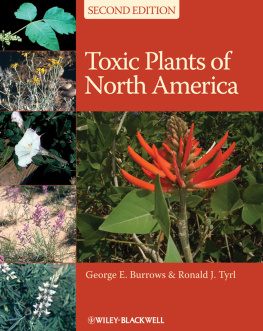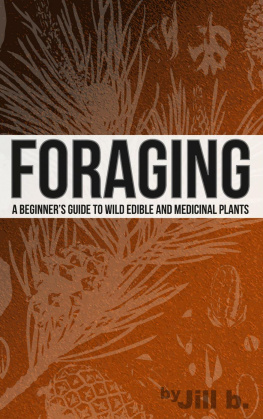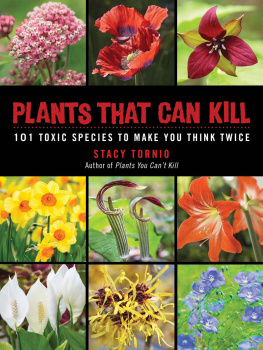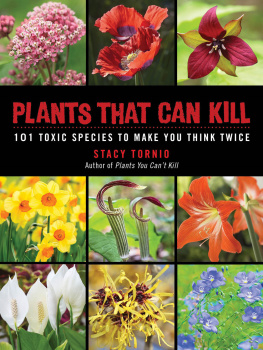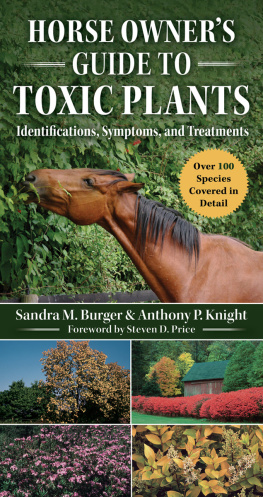Burrows George E. - Toxic Plants of North America
Here you can read online Burrows George E. - Toxic Plants of North America full text of the book (entire story) in english for free. Download pdf and epub, get meaning, cover and reviews about this ebook. year: 2012, publisher: John Wiley & Sons Inc, genre: Romance novel. Description of the work, (preface) as well as reviews are available. Best literature library LitArk.com created for fans of good reading and offers a wide selection of genres:
Romance novel
Science fiction
Adventure
Detective
Science
History
Home and family
Prose
Art
Politics
Computer
Non-fiction
Religion
Business
Children
Humor
Choose a favorite category and find really read worthwhile books. Enjoy immersion in the world of imagination, feel the emotions of the characters or learn something new for yourself, make an fascinating discovery.
- Book:Toxic Plants of North America
- Author:
- Publisher:John Wiley & Sons Inc
- Genre:
- Year:2012
- Rating:4 / 5
- Favourites:Add to favourites
- Your mark:
- 80
- 1
- 2
- 3
- 4
- 5
Toxic Plants of North America: summary, description and annotation
We offer to read an annotation, description, summary or preface (depends on what the author of the book "Toxic Plants of North America" wrote himself). If you haven't found the necessary information about the book — write in the comments, we will try to find it.
Toxic Plants of North America — read online for free the complete book (whole text) full work
Below is the text of the book, divided by pages. System saving the place of the last page read, allows you to conveniently read the book "Toxic Plants of North America" online for free, without having to search again every time where you left off. Put a bookmark, and you can go to the page where you finished reading at any time.
Font size:
Interval:
Bookmark:

This edition first published 2013 2013 by John Wiley & Sons, Inc.
First edition published 2001 Iowa State University Press
Wiley-Blackwell is an imprint of John Wiley & Sons, formed by the merger of Wileys global Scientific, Technical and Medical business with Blackwell Publishing.
Editorial offices: 2121 State Avenue, Ames, Iowa 50014-8300, USA
The Atrium, Southern Gate, Chichester, West Sussex, PO19 8SQ, UK
9600 Garsington Road, Oxford, OX4 2DQ, UK
For details of our global editorial offices, for customer services and for information about how to apply for permission to reuse the copyright material in this book please see our website at www.wiley.com/wiley-blackwell.
Authorization to photocopy items for internal or personal use, or the internal or personal use of specific clients, is granted by Blackwell Publishing, provided that the base fee is paid directly to the Copyright Clearance Center, 222 Rosewood Drive, Danvers, MA 01923. For those organizations that have been granted a photocopy license by CCC, a separate system of payments has been arranged. The fee codes for users of the Transactional Reporting Service are ISBN-13: 978-0-8138-2034-7/2013.
Designations used by companies to distinguish their products are often claimed as trademarks. All brand names and product names used in this book are trade names, service marks, trademarks or registered trademarks of their respective owners. The publisher is not associated with any product or vendor mentioned in this book. This publication is designed to provide accurate and authoritative information in regard to the subject matter covered. It is sold on the understanding that the publisher is not engaged in rendering professional services. If professional advice or other expert assistance is required, the services of a competent professional should be sought.
Library of Congress Cataloging-in-Publication Data
Burrows, George E. (George Edward), 1935
Toxic plants of North America / George E. Burrows, Ronald J. Tyrl. 2nd ed.
p. cm.
Includes bibliographical references and index.
ISBN 978-0-8138-2034-7 (hardback : alk. paper) 1. Poisonous plantsNorth America. I. Tyrl, Ronald J. II. Title.
QK100.N6B87 2013
581.6'59097dc23
2012015386
A catalogue record for this book is available from the British Library.
Wiley also publishes its books in a variety of electronic formats. Some content that appears in print may not be available in electronic books.
Disclaimer
The publisher and the author make no representations or warranties with respect to the accuracy or completeness of the contents of this work and specifically disclaim all warranties, including without limitation warranties of fitness for a particular purpose. No warranty may be created or extended by sales or promotional materials. The advice and strategies contained herein may not be suitable for every situation. This work is sold with the understanding that the publisher is not engaged in rendering legal, accounting, or other professional services. If professional assistance is required, the services of a competent professional person should be sought. Neither the publisher nor the author shall be liable for damages arising herefrom. The fact that an organization or Website is referred to in this work as a citation and/or a potential source of further information does not mean that the author or the publisher endorses the information the organization or Website may provide or recommendations it may make. Further, readers should be aware that Internet Websites listed in this work may have changed or disappeared between when this work was written and when it is read.
Chapter One
Introduction
We humans have an intimate relationship with the plants that surround us. We take them for granted as we use them for food, clothes, and shelter. We use them medicinally; indeed, more than one-third of our modern pharmacopoeia has its origins in plant products. We please our senses, decorate our living spaces, and express our feelings for one another with them. Plants are an essential part of many of our religious and social rites. Paradoxically, some of the plants we prize for these varied uses may also pose a threat to us or to our domesticated animals. Toxic plants are very much a part of our environment. Until their effects, ranging from mild irritation or discomfort to rapid death, become apparent, they are often ignored or simply overlooked. Because of their ubiquity, there is a need for a comprehensive treatment of toxic plants likely to be encountered in North America, north of the Tropic of Cancer, growing wild or cultivated. The first edition of this book was written in response to that need.
The objective of this undertaking was to write a comprehensive treatment of toxic plants that brought together the currently available information on (1) their morphology and distribution, (2) the disease problem or problems associated with them, (3) their toxicants and mechanisms of action, (4) the clinical signs and pathologic changes associated with their toxicity, and (5) the principal aspects of treatment. The perspective of the first edition was primarily veterinary science.
Compilation of the information presented in the first edition began in the 1980s as a series of articles for the Oklahoma Veterinarian and an agricultural extension publication, Poisonous Plants of Oklahoma and the Southern Plains . Well received, these publications dealt primarily with native plants and their toxicity for livestock. Initially, the present book was anticipated to do the same for the United States. Gradually, however, its scope and depth of coverage evolvedlarger area, more plant families, and greater detail than first envisioned. These changes came about in part because of the increasing popularity of ornamental plants for both house and garden. There has been a corresponding increase in awareness of toxicity problems associated with some of them.
In the 11 years since publication of the first edition, a wealth of toxicologic information has been compiledunknown toxicants identified, mechanisms of intoxication elucidated, and additional reports of problems published. In addition, there has been a corresponding increase in taxonomic knowledge with significant changes in the classification of plant families and genera and associated changes in nomenclature. Because of this almost exponential increase in our knowledge of toxic plants, work on a second edition was initiated in 2009.
In addition to compiling and presenting the literature of the last decade, we have also slightly altered the perspective of this edition. We have included information about four additional aspects of plant toxicology; they are summarized in the following subsections.
The first edition focused primarily on veterinary science because of our professional backgrounds and the need for such a book in the discipline. In this second edition we have attempted to place increased emphasis on human intoxications because the information acquired about both humans and other animals is often interrelated and supportive. For the most part, plant intoxications in humans, while not uncommon, do not pose the lethal risk (with the exception of Datura and Cicuta ) seen with livestock and other animals, but they nevertheless may be numerous and sometimes serious as revealed in annual reports from Poison Control Centers (Litovitz et al. 2001; Bronstein et al. 2007). It may be expected that in most instances similar disease problems will occur in both humans and animals with a few exceptions.
Next pageFont size:
Interval:
Bookmark:
Similar books «Toxic Plants of North America»
Look at similar books to Toxic Plants of North America. We have selected literature similar in name and meaning in the hope of providing readers with more options to find new, interesting, not yet read works.
Discussion, reviews of the book Toxic Plants of North America and just readers' own opinions. Leave your comments, write what you think about the work, its meaning or the main characters. Specify what exactly you liked and what you didn't like, and why you think so.

